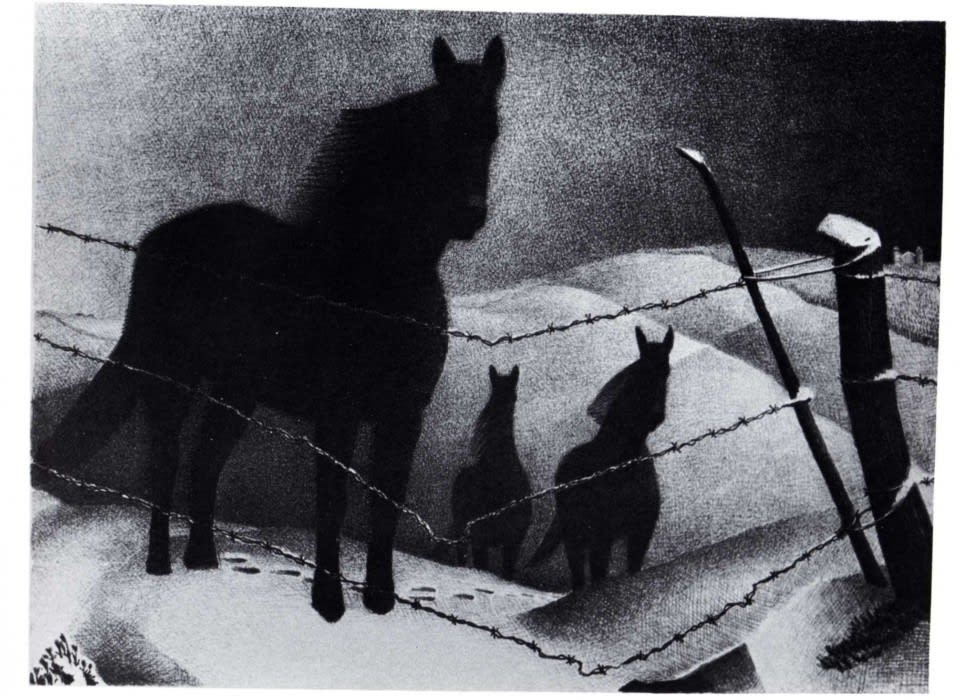When Grant Wood’s American Gothic was first exhibited, it was a hit in Chicago and a flop in Iowa. It won Wood a bronze medal at the 1930 annual exhibition at the Art Institute of Chicago, was purchased by the Art Institute for its permanent collection and made Wood famous.
The response in Cedar Rapids, where Woods lived and painted, was not as positive. Angry letters to the local papers accused Wood of mocking them because of the rigid posture and unsmiling attitude of his models. One angry woman suggested he have his “head bashed in.” Even Wood’s sister, Nan, who was the female model for the painting, became angry when people thought the couple in American Gothic were man and wife. Even newspaper captions referred to the painting as An Iowa Farmer and His Wife. The male model for the painting was Wood’s dentist, twice as old as Nan.
The title of the painting refers to the window on the top floor of the house. Wood passed the house on a trip through Eldon, Iowa in 1930 and was surprised to see a gothic window, the type of window he had seen in cathedrals in Europe, in a little white house in Iowa. American Gothic was seen as satire by some and a tribute to American strength and fortitude to others. It is still one of the most recognizable, and parodied, works of American art.
More Than Just a Dour Face
Grant Wood was not only a fine painter, he also worked in metal, made jewelry, furniture, stained glass and was a master printer. He was well educated and traveled to Europe, so that the influence of French and German painters are apparent in his work. The influence of Van Gogh can be seen in his use of outline and earth tones in The Tree, painted in 1923.
Wood worked out of a studio in Cedar Rapids, which was provided to him by friend and town mortician, David Turner. It was in that studio, at 5 Turner Alley, that Wood’s worked evolved into a formal style of subject, precision and design. “I had to go to France to appreciate Iowa.” he said. During the early part of the twentieth century, in which Wood painted, machines, like the combine harvester and thresher, were being introduced on family farms in America. Wood painted the people who made the new machines, but rarely included a machine in his paintings of the farms.
What he painted were vast landscapes, stoic farm families and sometimes satirical portraits of his neighbors and rigid American tradition.
What Wood Saw and Felt
Much of the beauty of Wood’s paintings and lithographs can be found in the feelings that are evoked when viewing his work. As an artist who advocated Regionalism, the painting of rural America by American artists, he was attuned to the natural rhythms of daily life, the changes in the seasons and the cultural transformations that affected the world around him.
His paintings and lithographs have a texture and warmth that reveal the skill of a truly great artist. Please contact us for more information about the works of Grant Wood available at Surovek Gallery.




